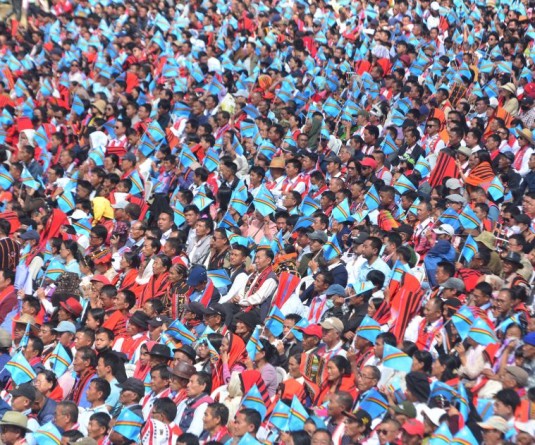
Ngaranmi Shimray
New Delhi
Union Home Minister has decided that there will be Indo-Myanmar border fencing of 1643 Km and suspension of the Free Movement Regime (FMR) across four states namely Arunachal, Nagaland, Manipur and Mizoram who share borders with Myanmar. This decision has been taken inspite of opposition from the Chief Ministers of Nagaland and Mizoram and the Naga and Kuki-Zo tribes. The NSCN-IM had issued a statement on January 24, 2024 stating that, “…we are totally against boundary fencing in our lands that violates our rights as one family.” It went on to state that “…NSCN will not allow the proposed boundary fencing that further divides the Naga family as a nation”.
The Naga Students’ Organisation (Sagaing Region Office, Myanmar) on February 2, 2024 had passed the Lahe declaration vehemently denouncing the intent of the Government of India to fence and bifurcate Naga villages, fields, and farmlands between India and Myanmar. The United Naga Council, All Naga Students’ Association, Manipur (ANSAM) the apex civil bodies of the Nagas in Manipur including the Indigenous Tribal Leaders’ Forum had expressed its opposition to the proposal for border fencing.
Inspite of the voices of the affected people across four states, the lone voice of Chief Minister Biren Singh of Manipur, whose Meitei community is not affected at all by the proposal for border fencing and suspension of FMR, has prevailed over the opposition of the Naga, Kuki and Zomi tribes who reside in the border areas of the two countries where the FMR is in place. The FMR evolved in recognition of the artificial boundary between India and Myanmar and for allowing the kinship, customary, cultural and traditional relationship of the tribes living on both sides of the international border to continue their age old social and cultural interaction. The decision for suspension of FMR is going to seriously affect the Naga and Kuki-Zo tribes who have been having free access across the border for centuries even before the formalisation by the FMR.
The decision to erect border fencing and suspend FMR advocated by the Chief Minister of Manipur based mainly on the current Manipur crisis may be influenced by security concerns, but the religious bias has stood out like a sore thumb. Safeguarding the interest of Hindus in the hinterland of Imphal valley who are not directly impacted as there is not a single Meitei village on both sides of the international border could be termed as bias in favour of the Hindu Meiteis against the interest of the Naga and Kuki-Zo tribes. The interest of the Meitei people seem to have primacy over the interest of Naga, Kuki and Zomi tribes spread over four states. This decision could henceforth be viewed as a policy in favour of a group of people whose interest resonates with the government at the Centre. The changing political clout of the Meiteis could serve as an eye opener for the tribals living in four states of what they may or may not expect from the Government of India if pitted against the interest of the Meiteis and may also impact electoral politics. The Meiteis may become isolated and the relationship between the Meiteis and non-Meiteis in the four states may change for the worst.
It could also be a turning point in the geo-political scenario for the affected parties i.e. the Nagas and Kuki-Zomi to make them realise that their common interest are best served if they unite and bury the hatchet to face new emerging challenges from a resurgent Meitei community in the state of Manipur under the guardianship of New Delhi. Unity and solidarity of the tribes of Manipur is the best way forward to deal with the changing and evolving challenges in Manipur.




